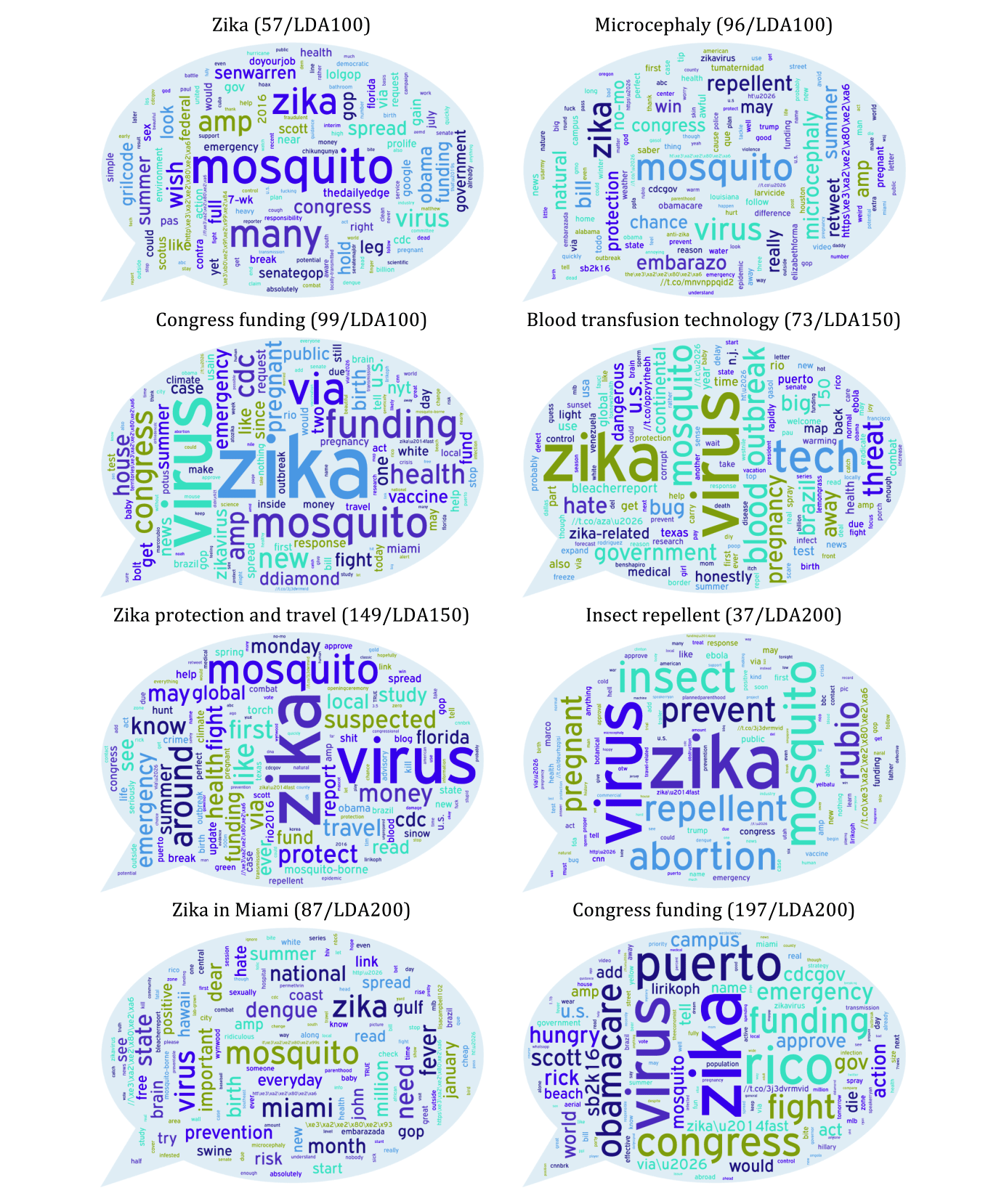During the 2016 Zika virus outbreak, the Annenberg Public Policy Center surveyed tens of thousands of people over more than seven months to learn about the American public’s behavior, attitudes, and knowledge about the virus as it spread to the United States.

Yet over the same period, an even larger group of people were talking with each other about the virus in another venue entirely – on social media.
Now, a new analysis conducted jointly by researchers at the Annenberg Public Policy Center and the University of Illinois finds a correlation between the Zika topics discussed on Twitter and the survey results. “Our results demonstrated that it is possible to uncover topics of discussion from Twitter communications that are associated with Zika-related attitudes, knowledge, and behaviors of populations over time,” the researchers said.
The researchers said this suggests that social media conversations can be used “to monitor and predict” people’s attitudes and knowledge about Zika, and used in the future as a diagnostic tool for public health communications.
“It’s a very valid indicator,” said Dolores Albarracín, a professor of psychology at the University of Illinois at Urbana-Champaign and co-author of the study. “If you compare what’s on Twitter with what’s coming out of this nationally representative sample week after week, they are highly correlated.”

The researchers, including Albarracín and co-principal investigator Kathleen Hall Jamieson, director of the Annenberg Public Policy Center (APPC), wrote that “social media data can be used as a complementary source of information alongside traditional data sources to gauge patterns of attitudes, knowledge, and behaviors of a population.”
The study was published this month in the journal JMIR Public Health and Surveillance.
The Zika surveys and Twitter analysis
The researchers used data from APPC’s Annenberg Science Knowledge (ASK) survey about Zika, conducted by landline and cellphone from February 2016 through August 2016. The 33 weeks of survey data included 33,193 respondents (about 1,000 per week) who were asked about their attitudes, behavior and knowledge of Zika.
University of Illinois researchers winnowed through a dataset of 3.8 million tweets using Zika-related keywords that were posted in the survey period, including such terms as “Zika” and “dengue” (both transmitted by the Aedes mosquito), “mosquito,” “microcephaly” and “birth defects.” The researchers analyzed the tweets for patterns using a statistical model called latent Dirichlet allocation, or LDA.
The researchers found moderate to high correlations between Zika-related Twitter topics and survey responses. They found, for instance, that during times when the survey found greater knowledge about microcephaly, a birth defect that can be caused when a pregnant woman is infected by Zika, there was more Zika-related Twitter discussion on Zika protection and travel.
“Our work demonstrated that social media data can be used as a complementary source of information alongside traditional data sources to gauge patterns of attitudes, knowledge, and behaviors of a population,” the researchers said. They added that developing text mining tools have practical applications in public health.

Social media as public health tool
Albarracín said the study set out to determine whether the digital “traces of human behavior and communication online” could be a cost-effective way to predict responses to a national survey. In fact, she said, the study serves as “a proof of concept” in devising ways to draw inferences based on social media conversations. She said the study also refutes a popular misconception.
“There’s a sector of the population, including members of the scientific community, who dismiss social media as biased. That is clearly not always the case,” said Albarracín, who is also a distinguished research fellow at APPC. “Social media can be used to track important problems, and therefore is also likely to be a great tool for informing the public. Whether or not the actual people who are tweeting are a representative sample of the U.S., the content overall ends up being representative of the concerns of the public as a whole.”
Albarracín and Jamieson’s co-authors are Mohsen Farhadloo and Man-pui Sally Chan of the University of Illinois at Urbana-Champaign and Ken Winneg, APPC’s managing director of survey research.
The study “Associations of Topics of Discussion on Twitter With Survey Measures of Attitudes, Knowledge, and Behaviors Related to Zika: Probabilistic Study in the United States” is in JMIR Public Health Surveillance. The study was supported by the Science of Science Communication endowment of the Annenberg Public Policy Center and the National Institutes of Health.
To download this news release, click here.

